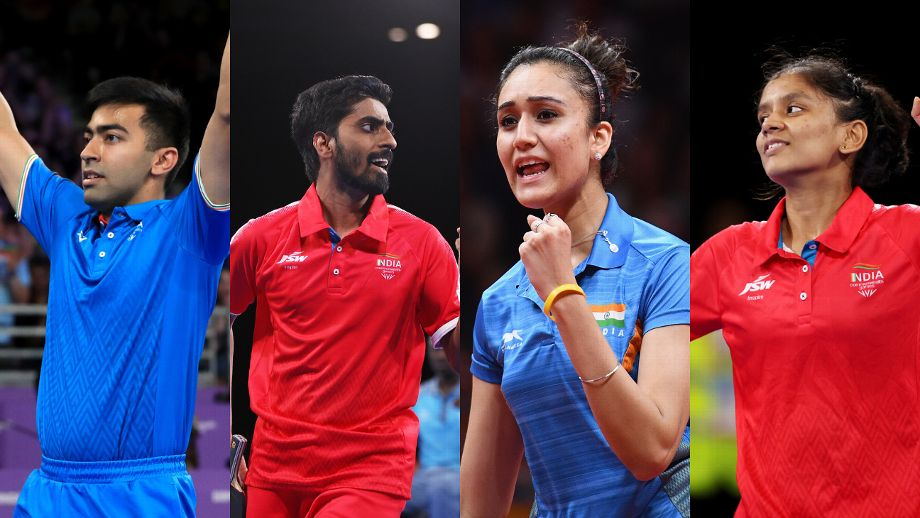India at ITTF World Team Table Tennis Championships: All you need to know
India at ITTF World Team Table Tennis Championships: All you need to know: Finals for the 2022 ITTF World Team Table Tennis Championships will be held in Chengdu, China on September 30, amidst a tight Covid policy and, for India, without one of its greatest players, Achanta Sharath Kamal.
The postponed World Championships are the first international competition to be held in China since the 2008 Winter Olympics, which were also held in an enclosed space.
Due to the country’s Covid policy, China had previously postponed the Asian Games and the Men’s Asian Cup, and Chendgu had been under lockdown until very recently.
However, severe safety precautions were made an exception in the case of table tennis, which is dominated by Chinese players at the top level, including admittance only via chartered planes, daily PCR testing, a strict bio-bubble, and regular health updates.
Who is in the Indian squad?
Veteran Indian table tennis player Sharath, who won three gold medals at the Commonwealth Games earlier this month, did not participate due to personal issues.
Sanil Shetty, Harmeet Desai, Manush Shah, and Manav Thakkar will represent India on the men’s side, while G Sathiyan, ranked 37th in the world and a bronze medalist in the CWG, will take over as captain in his absence.
Manika Batra, Sreeja Akula (the surprise star of the 2022 Commonwealth Games), Reeth Rishya, Diya Chitale, and Swastika Ghosh will spearhead the Indian women’s challenge.
What is the tournament format?
For the World Team Table Tennis Championships, play will begin with a round of group play, with the top 16 teams advancing to the elimination rounds. Each match in a best-of-five series is played to a maximum of five games. There won’t be any doubles play at this gathering.
The Indian men’s squad was placed in Group 2 alongside Germany, France, Kazakhstan, and Uzbekistan on Wednesday, while the Indian women’s team was placed in Group 5 with Germany, Egypt, and the Czech Republic.
Each group’s top two teams advance, with the best third-placed teams filling the remaining slots to make a total of 16. Overall standing determines which of seven men’s groups and six women’s groups each competitor will be assigned to.
Indian men, more seasoned even without Sharath, will have their work cut out for them in a group that also includes Germany, traditional powerhouse and second seeds behind China.
Players
Although Germany recently crowned European champion Dang Qiu, the absence of top-ranked players like Dimitrij Ovtcharov, Patrick Franziska, and Timo Boll gives Sathiyan a chance to gain ground in the rankings.
Indian athletes are in good shape, as evidenced by their recent Commonwealth Games gold medal for the men’s team. Their most recent outing was at the National Games, where the table tennis tournament was held before the official opening.
Harmeet Desai and Sutirtha Mukherjee won the men’s and women’s singles events, respectively, at the National Games after defeating top seeds Sathiyan and Manika Batra.
Before this defeat, Sathiyan had won team gold at the CWG and a solo bronze, and he had also reached the quarterfinals of the men’s singles competition at the WTT Contender 2022 in June when he upset world No. 6 Darko Jorgic and up-and-coming Chinese player.
Sreeja Akula, who won silver, and Manush Shah, who helped the Gujarat men’s team win, were two more standout performers at the National Games.
Who are the favorites?
The country naturally plays host to the People’s Republic of China.
They are currently holding titles for both the men’s and women’s competitions, and they have been the undisputed leaders in these fields for quite some time.
In addition to current world no. 1s Fan Zhendong and Sun Yingsha, the hosts’ roster includes Olympic singles champions Ma Long and Chen Meng.
With the exception of the 1926 bronze won by Athar-Ali Fyzee, Hassan Ali Fyzee, A.M. Peermahomed, B.C. Singh, and S.R.G. Suppiah, Independent India has never won a team medal at the World Championships. Bronze in men’s singles was added to the other medals Suppiah brought home.
Sathiyan, when asked about China’s huge advantage in table tennis compared to the rest of the world, remarked that while the fear had diminished to an extent, the Chinese system was outstanding.
“China has put a lot of resources into the sport, both monetary and organizational. Similar to our grading system, they use a grading system for table tennis.
They have a set curriculum for teaching table tennis, including what skills should be introduced to students at age 6 and what skills should be introduced to students at age 10.
Remarks
Every state teaches it in the same manner, and every few years, they update it.
You can’t even begin to fathom their budget or the number of coaches associated with this organization “he said to reporters at a press conference held alongside a workshop hosted by the GoSports Foundation in Mumbai.
“They began the system in the 1960s, but it wasn’t until the 1990s that it began to show any real promise. We may not reach our goal in India in the next 30–35 years, but we are headed in the right way. I feel confident enough to tell that I defeated a Chinese player in Zagreb and that my nervousness is now completely gone.”
We don’t have any qualms about the quality, but the name is what makes us nervous. Even if the top 3–4 Chinese stars are exceptionally talented, foreign players are now routinely able to win matches against Chinese opponents.
“More tournaments are popping up, and we’re running into them frequently. I have no doubt that we have begun to make a dent in the Great Firewall of China” As he put it.

